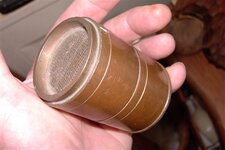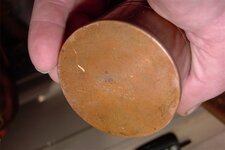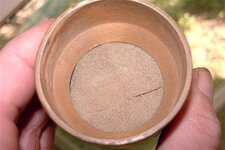mojjax
Silver Member
It's marked CENTRAL SCIENTIFIC CO. CHICAGO on the bottom .The middle section appears to unscrew , but no matter how hard I try I just cant do it - However , the bottom pops off revealing a piece of cloth mesh towards the center . It weighs over a pound .
mojjax
mojjax











